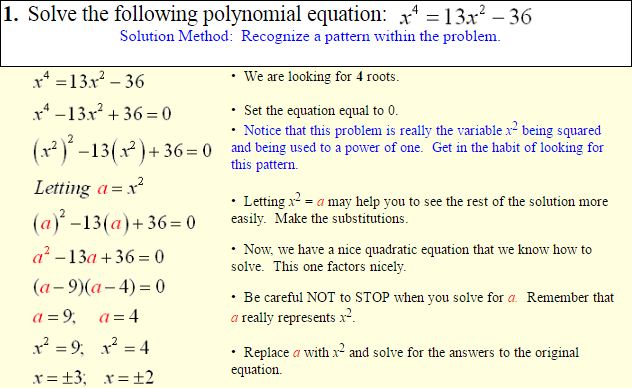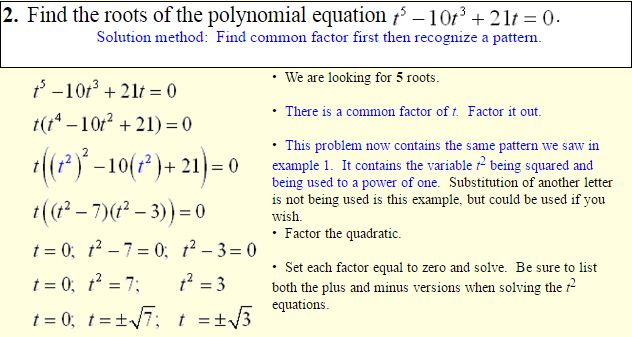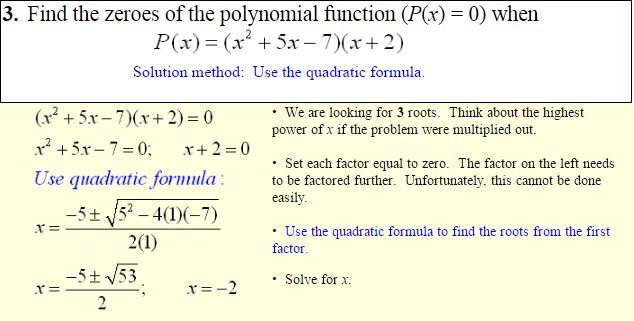Solving Polynomials Equations of Higher Degree

When the powers in polynomial equations increase, it becomes more difficult to find their solutions (roots).
Consider an equation such as
![]()
Finding the roots of an equation such as this can prove to be quite a task. In this course, we will just be touching the surface on techniques for solving higher degree polynomial equations.
Let’s be sure that we understand the vocabulary associated with this type of task.
The following statements are different ways of
asking the same thing!!
- Solve the polynomial equation P(x) = 0.
- Find the roots of the polynomial equation P(x) = 0.
- Find the zeroes of the polynomial function P(x) (P(x) = 0).
- Factor the polynomial function P(x) = 0 and express the roots.
Read More:
- What is a Polynomial?
- Types of Polynomials
- Monomials, Binomials, and Polynomials
- Adding Polynomials
- Subtracting Polynomials
- Dividing Polynomials
- Polynomials – Long Division
- Degree (of an Expression)
- Special Binomial Products
- Multiplying Binomials
- Difference of Two Cubes
- Polynomial Remainder Theorem
How many roots should we expect to find? A polynomial of degree n will have n roots, some of which may be multiple roots (they repeat). For example,
![]()
is a polynomial of degree 3 (highest power) and as such will have 3 roots. This equation is really (x-1)(x-4)(x-4) = 0 giving solutions of x = 1 and x = 4 (repeated).
Examples:



Read More:
- Factoring in Algebra
- Factorization of Polynomials Using Factor Theorem
- How do you use the factor theorem?
- How to factorise a polynomial by splitting the middle term?
- Review Factoring Polynomials
- Zeros of a Polynomial Function
- Factors and Coefficients of a Polynomial
- Roots of Polynomials: Sums and Products
- Examining Graphs of Polynomial Equations of Higher Degree
